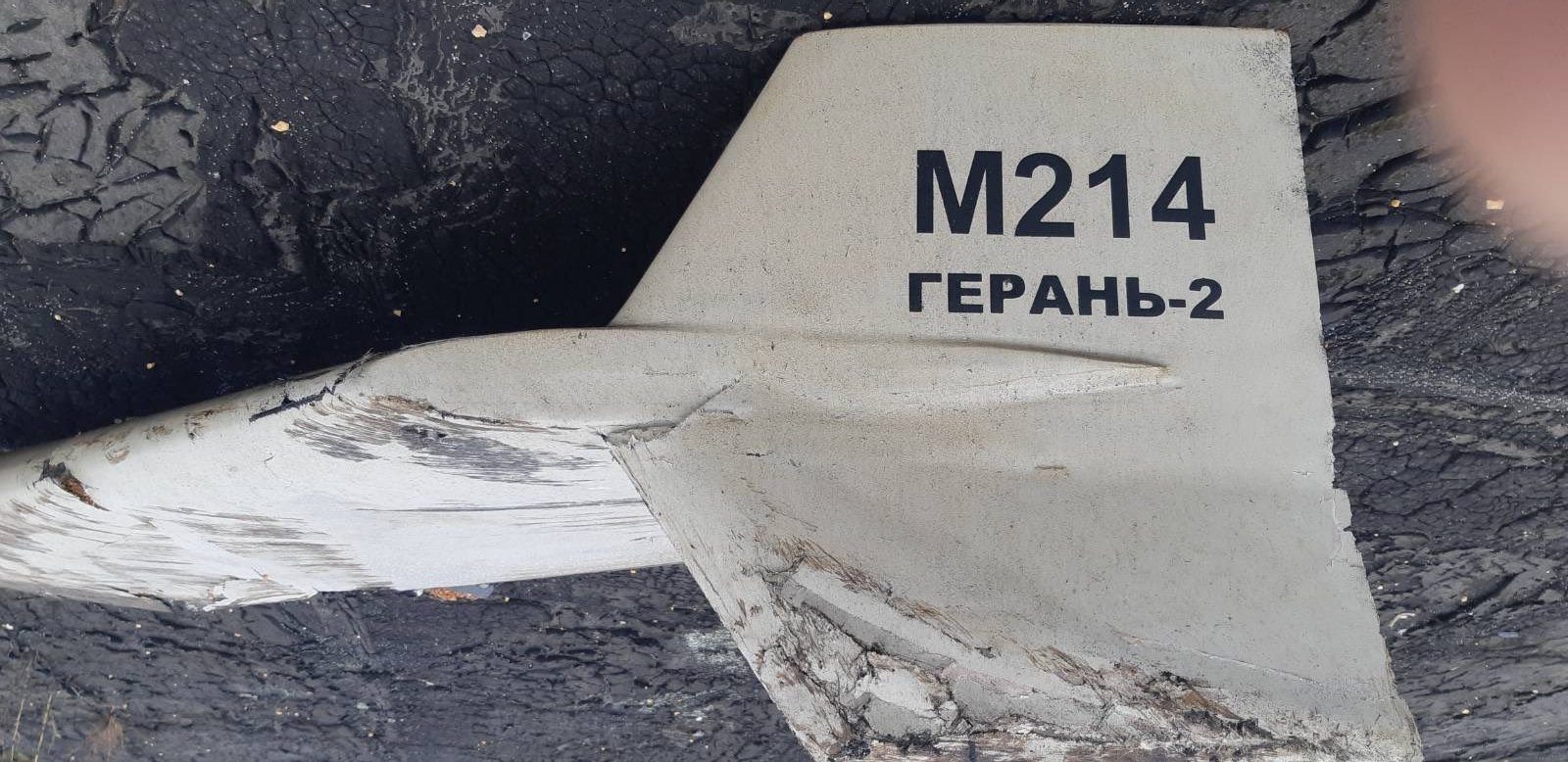For the first time, the Ukrainian Armed Forces have reportedly destroyed an Iranian attack drone employed by the Russian Forces.
The images, a Ukrainian officer shared on Twitter, appear to show the wreckage of a Shahed-136 kamikaze drone that Ukrainian forces claimed to have shot down near Kupiansk, in the Kharkiv Oblast.
The debris bears the Cyrillic designation “M214 Geran-2.” Although there have been reports that Russia was using Iranian drones to attack Ukraine, this could be the first visual confirmation.
The drone’s charred remains resembled an Iranian drone with a triangle- or delta-shaped design called the Shahed, or “Witness” in Farsi.
#Ukraine: In the first credible sighting of Iranian drones in use by Russian forces, here we see the remains of a HESA Shahed-136 loitering munition (or a design based on it), which is made in Iran. From the appearance, it seems it likely detonated.
Images via @kms_d4k pic.twitter.com/LUBKrPAMNc
— 🇺🇦 Ukraine Weapons Tracker (@UAWeapons) September 13, 2022
According to Ukraine media reports, Ukrainian troops reportedly came into contact with the drone near Kupiansk during Kyiv’s offensive on the eastern front, which has broken through Russian defenses around Kharkiv.
In July, US intelligence had forewarned that Tehran could send hundreds of drones to Russia to support its war in Ukraine. Although Iran initially denied the reports, its paramilitary Revolutionary Guard boss recently boasted about arming the world’s powerful nation.
In the last few decades, Iran has emerged as a massive drone power. Despite technology import restrictions, Tehran has established itself as a major force that can develop a wide range of indigenous drones.
Iran has carved out a niche for itself by exporting drones to serve its own purposes, such as arming Hezbollah with drones to strike Israel and the Houthis with drone technology to target Saudi Arabia.
Meanwhile, Iran developed closer ties with Russia due to crippling sanctions imposed on the country after the failure of the nuclear deal in 2018 when then-President Donald Trump unilaterally withdrew from the agreement.

Shahed-136 Drone
Tehran reportedly has several variants of the Shahed drone. While Iran has released limited details, the triangle-shaped Shahed is thought to have a range of about 2,000 kilometers (1,240 miles). This makes it capable of hitting precise targets from a long range—a capability that Russia desperately needs.
Shahed Aviation Industries, a company with a long experience in drone research, manufactures this drone. The company also developed the popular Shahed-129, a Predator clone, the Shahed-149, the Iranian counterpart of the larger Reaper, and the stealthy Shahed-181 and 191 drones.
The development of these drones by the Iranian company was based on the technology reverse-engineered from a US RQ-170 captured in 2011. With a wingspan of 12 feet and an estimated weight of 200 kilos/440 lbs, the Shahed-136 is large for a loitering munition.
“Loitering munitions” are also referred to as Bomb-carrying drones. The drone flies to its target and either explodes over the target or collides with it.
The Shahed-136 was demonstrated by Iran in 2021 during the annual Great Prophet exercise. During that exercise, a launcher—a container on the back of a truck—launched five of the drones equipped with rocket boosters in rapid succession.
The drone’s terminal guiding system is unknown. However, it could incorporate an optical or infrared imager capable of recognizing and locking on targets rather than just GPS guidance.
Despite some claims, there is little evidence that the Shahed-136’s swarming characteristics genuinely allow the drones to work together as a well-coordinated team. Instead, it appears that saturation attacks are intended to overwhelm air defenses so that some UAVs manage to slip past and strike.
The remains in Ukraine bore Cyrillic marks designating the munition as “M214 Geran-2” (‘Geranium-2.’) This could mean that the weapons were customized for the Russians instead of supplied from existing stocks. This could suggest that the Iran-Russia agreement has been in the works for some time.
Loitering munitions are different from cruise missiles as they can search for targets while in flight rather than having to be pre-programmed before launch. They also move at relatively modest rates; the Shahed-136 travels at roughly 120 mph.
Nevertheless, the new Iranian hovering munitions could endanger the Ukrainian military assets and critical infrastructure. But if a coordinated defense system can handle many targets at once, the slow, low-flying weapons might be relatively simple to take down.
- Contact the author at ashishmichel@gmail.com
- Follow EurAsian Times on Google News